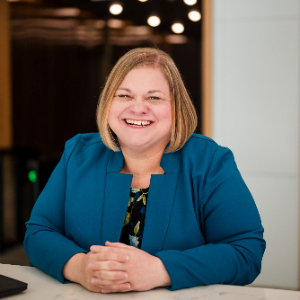Principles of Sound Investing: Balance

Balance is a universal principle that works wherever it is applied. For example, a balanced nutritional program is better than an unbalanced one; a balanced exercise program is better than an unbalanced one; and a balanced life is better than an unbalanced life.
This same investing principle of balance has historically worked in portfolio management. Adding diversity of style, geography, and asset class has historically mitigated volatility, and made it easier for our clients to remain “buckled in.”
Balance helps us to see what’s worked in the past and make decisions from an informed place. Then, it allows us to make wise investment choices based on what we know about consistency and courage.
Asset Classes Move In and Out of Favor
Diversification across asset classes may keep investors from chasing last year’s performance. What works in one year doesn’t necessarily work in the subsequent years. Oftentimes, last year’s outperformer falls to the bottom of the pack and vice-versa. Knowing this investment principle of balance helps us to understand what’s coming up and ride this wave of changing favor in asset classes.
Imbalance: The Home Bias
Although our lives have become increasingly globalized, our approach to investing, arguably, has not. Investors still have nearly 75% of their equity portfolios in US-domiciled companies, despite the fact that the US now represents less than half of the world’s market capitalization. US-centric investors are missing out on a much larger opportunity set. Of the 8,897 actively traded companies with a market capitalization of over $1 billion, over 74% (39% in the developed world, 35% in the emerging world) are headquartered outside of the US.
Another imbalance in investors’ portfolios is the amount of money sitting in cash and cash equivalents ($20.4 trillion) and government-related bond funds ($4.2 trillion). In our view, having money in cash today is akin to growing poor slowly given the negative real after-tax returns. Fixed income mutual fund investors may be doing somewhat better from an income perspective but not significantly better. Government-related bonds are highly interest-rate sensitive.
The Challenge of Low Rates
Let’s look at some historical context here. These insights may provide a much-needed long-term perspective in a world of “breaking news,” dire predictions, and market volatility:
In our view, what history shows us over and over again is the extraordinary resilience, creativity, invention, and innovation of mankind through the ages.
We believe optimism is ultimately the only realism. Pessimism is counterintuitive because it rests on the concept of insoluble crises, which, the way we see it, simply doesn’t square with the facts. If humans have shown one aptitude, it is the capacity to adapt and to learn (compare our response to the financial crisis of 2008 to our response in 1929).
Pessimism is often framed around an exponential problem addressed by a linear solution. Human ingenuity, technological innovation, and the inherent limits of long-term forecasting appear to rarely be factored into the debate.
We believe the great underreported story of the last half-century is the dramatic improvement of the human condition around the globe. Even a cursory glance at the evening news would give you the opposite impression—that the world is “coming apart at the seams” as they say.
This is based on two factors:
Fear sells! Neuropsychology has demonstrated that human beings respond quickly and virtually unconsciously to fear; and the news media, along with advertisers and politicians, have arguably been exploiting this response throughout recorded history.
The explosion of news outlets with the advent of cable and the Internet has exacerbated this problem as they ratcheted up fear with the goal of capturing an increasingly fragmented market.
The American Dream, Balance, and Investing Success
Many of us can remember when gasoline was $0.50 a gallon and going to see a movie was a buck; however, we tend to look at these prices relative to our incomes today. When you look at overall expenses relative to income between 1900 and today, you will see something remarkable.
In 1900, living expenses actually exceeded income. By 1950, expenses were only 90% of income, and most recently those expenses are only 80% of income.
An even more remarkable change has been the dramatic increase in discretionary income. In 1900, 80% of the average budget went to the basic necessities (food, shelter, and clothing). Today, over 50% of our income is discretionary and thus available for things of much higher purpose, comfort, and/or fun.
That means when we understand the investing principle of balance, or just how the market balances itself out overall, we can make investments with a bit more courage and consistently stay in the market longer, thus increasing our likelihood of a return, because of our ability to place funds in the market rather than needing to save it all for living expenses.
At the End of the Day…
Understanding where the imbalance is coming from and applying the investing principle of balance allows us to understand some of the volatility in the market and use it to our advantage. Like I mentioned above, there’s a little more freedom and ability to play. Understanding the rules of the game and how to make smart decisions will help you win more in the long run.
I’d encourage you to take my free assessment to see if you’re on track for building the financial wealth you need to live your best life and apply this and all principles of sound investing so you can maximize your wealth in the long term.
Comprehensive wealth management and financial planning with no minimum investment threshold.
You’ve got plans. Let’s take the first (or next) step together today.
Great Lakes Investment Management provides comprehensive financial planning including: optimizing investments, risk analysis, debt management, tax planning, career planning, retirement planning, and more.
We’ll also manage your investments on your behalf. Learn more about personalized support that is all about helping you reach your goals efficiently.
Then, schedule a complimentary consultation to see if we’d be a good fit and talk about taking the next steps together!




